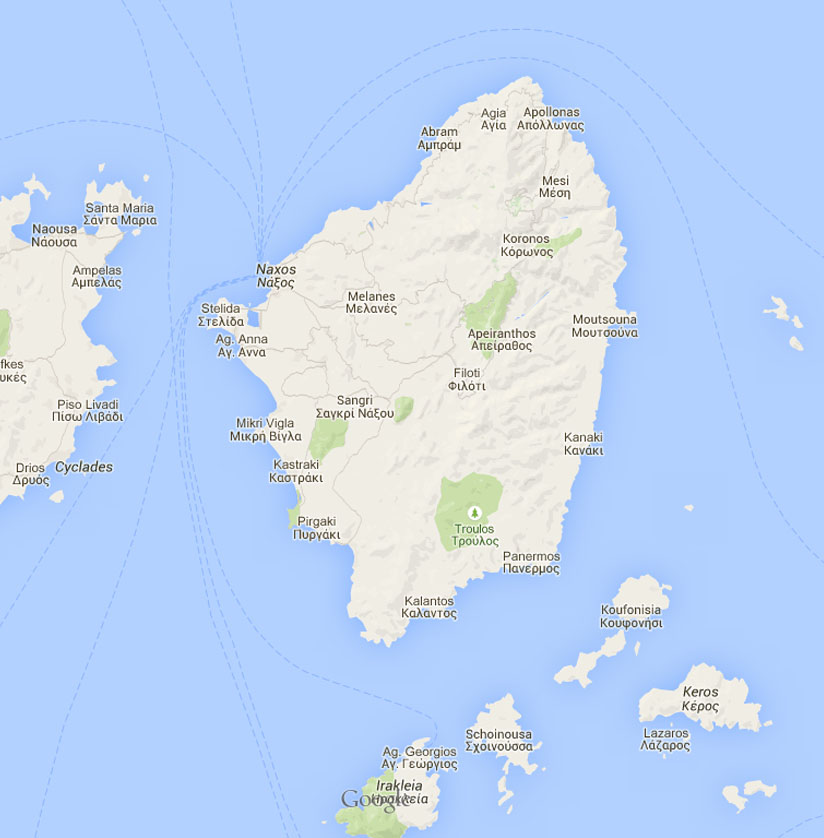Keramoti is located right at the centre of Naxos Island at Stavros Keramotis (Keramoti cross), which is the largest intersection of rural roads on the island, roughly 25km from main town Chora (Naxos town). It is surrounded by lots of greenery and High Mountains because it is built deep amid a nature-rich ravine with absolutely charming small stone-walled houses and narrow picturesque alleys. Motor cars do not have access to the centre of the village.
The traditional character of the small village is fully preserved. The village square or platsa, as it is referred to by locals, featuring the village’s old olive mill, lies at the village center. It is surrounded by pavements that fill with people during the summer months. The meeting point for village locals is the serving double-duty café-taverna, located just off the square.
Close to Keramoti are the natural sources of the two rivers of Naxos. These two rivers meet afew kilometers downstream, at a spot called Dipotamata (two rivers) and flow together from hence. The locals are involved mostly with agriculture, bee-keeping and cattle. This village has kept its traditional character and is off the main tourist stream. It does however have visitors due to its close proximity to Koronos.
At the courtyard of the village, there is church a dedicated to Agios Ioannis Theologos (Saint John the Theologian). Here, there is a folklore museum whose collection is gradually being enriched.
A small whitewashed church, dedicated to the Exaltation of the Holy Cross (Stavroproskynissi), offers a fantastic view of parts of Naxos’s both east and west coasts. A major event for the village is the feast of Stavroproskynissi which is held 28 days before Easter Sunday and is dedicated to the Holy Cross. The feast highlights abundant local wine from the nearby vineyards, traditional music, dance and local culinary delights.
The surrounding picturesque area offers plenty to see and is good for hiking. Sights include the Routsouna waterfall, over the southern river stream, the old stone-and-marble bridge should be visited for its craftsmanship and the old outdoor laundries where the village women gathered are of some interest. There are also two watermills and the old water reservoir which collects the water from the river tributaries which is then released via aqueducts to the vegetable gardens at Perada.
Keramoti is connected to the asphalted main road network. It is also linked via three rural asphalt roads leading to the villages of Apiranthos, Koronos, Kynidaros, and Moni, all connected via the Stavros Keramotis junction. A foot- track also connects the village with Eggares. Public transportation runs to and from Keramoti once a day during the summer months.
